I am trying to build a WPF TreeView with three layers. CountryReportTitle is a string property and ArticleCategoryTitlesList is a collection, both exposed from my ViewModel. There is no class hierarchy defined. This is the structure I'm looking for:

This is my attempted Xaml but I'm getting an exception in the Xaml at runtime:
{"Item has already been added. Key in dictionary: 'DataTemplateKey(ISESApp.ViewModels.ReportViewModel)' Key being added: 'DataTemplateKey(ISESApp.ViewModels.ReportViewModel)'"}
Xaml:
<TreeView ItemsSource="{Binding CountryReportTitle}">
<TreeView ItemsSource="{Binding CountryReportTitle}">
<TreeView.Resources>
<HierarchicalDataTemplate DataType="{x:Type local:ReportViewModel}"
ItemsSource="{Binding ArticleCategoryTitlesList}">
<TextBlock Text="{Binding CategoryTitle}" />
</HierarchicalDataTemplate>
<HierarchicalDataTemplate DataType="{x:Type local:ReportViewModel}"
ItemsSource="{Binding ArticleCatagoryTypesList}">
<TextBlock Text="{Binding ArticleTitle}" />
</HierarchicalDataTemplate>
<DataTemplate DataType="{x:Type local:ReportViewModel}">
<TextBlock Text="{Binding ArticleTitle}" />
</DataTemplate>
</TreeView.Resources>
</TreeView>
</TreeView>
Local: is a namespace to my ViewModel:
xmlns:local="clr-namespace:MyApp.ViewModels"
What am I doing wrong, what is the best approach for this problem?
